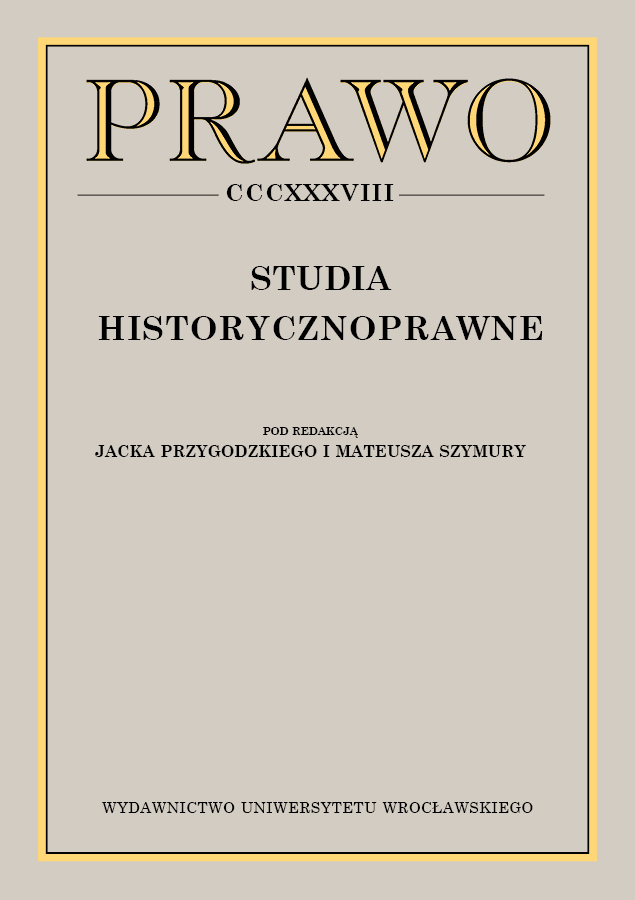Dyskryminacja dzieci pozamałżeńskich w ustawodawstwie cywilnym w Drugiej Rzeczypospolitej i próby jej przezwyciężenia w projektach kodyfikacyjnych
Discrimination against extramarital children in
civil legislation in the Second Polish Republic and
attempts to overcome it in the codifi cation projects
Author(s): Leonard GórnickiSubject(s): History of Law, Civil Law, Social history
Published by: Wydawnictwo Uniwersytetu Wrocławskiego
Keywords: extramarital children in the district legislation of the Republic of Poland in 1918– 1939;
Summary/Abstract: The article points out that of the fi ve coexisting systems of family law in independent Po-land that originated in the partition era, which were treated as Polish district law (namely: theFrench-Polish legislation in the central lands, the Russian legislation in the eastern lands, the Aus-trian legislation in the southern lands, the provisions of the Austrian legislation in force together,as well as some Austrian marriage laws and the Hungarian Personal Marriage Law of 1894 in Spišand Orava, and fi nally German legislation in the western lands of the Second Republic of Poland)—all discriminated against extramarital children, then known as “non-marital” and “illegitimate” or“natural” children. The rule, therefore, was that there existed a diff erence in the legal position ofmarital and extramarital children.The author initially analyzes the concept of an illegitimate child in district legislation in inter-war Poland, then addresses the issue of the distinction in the category of illegitimate children, aswell as the uniform regulation of their legal status in after partitions legislation. He then moves onto the work of overcoming discrimination against extramarital children in the Codifi cation Com-mission of the Republic of Poland, analyzing the original drafts prepared by Stanisław Gołąb (1934)and the drafts by the Subcommittee of the law on kinship and guardianship relations of the Codi-fi cation Commission based on them.The author argues that the drafts in Stanisław Gołąb’s original version were more progressive,since at their core was the fundamental equality of rights between children born during marriageand non marital children, while the Subcommittee gave this a more declarative form by assumingthat a child born out of wedlock could be equated with a marital child by order of the court (offi ce)of guardianship, issued at the request of the authorized subjects and with the consent of the personsindicated therein. At the same time, the author stresses that the new thoughts expressed in StanisławGołąb’s original draft, which constituted an important legislative advance, also found expression inthe version passed and still being amended by the Subcommittee, in particular the idea of essentiallyequating children born out of wedlock with marital children, the care of the court (offi ce) of guard-ianship and social welfare authorities over children born out of wedlock, as well as the principle ofexercising parental rights solely in the interests of the child, including those born out of wedlock.Work on the second reading of the drafts was not completed until the outbreak of World War II.
Journal: Prawo
- Issue Year: 2024
- Issue No: 338
- Page Range: 77-106
- Page Count: 30
- Language: Polish

